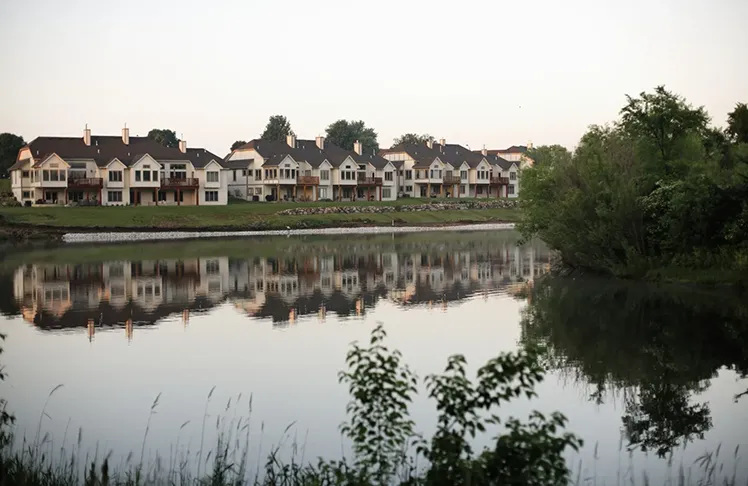
Nothing says that you’ve made it quite like living right by the water. And while it’s most often white people who are living out that fantasy in lakeside communities across the country, there are some waterfront towns with significant Black populations (or otherwise non-white) — but what a new study has found is that the water in such communities is far less likely to be subject to water-quality monitoring.
The study, published in the journal Frontiers in Ecology and the Environment, is believed to be the first to look at water-quality monitoring on lakes as an environmental justice issue. On the whole, the researchers found that lakes in white communities were three times more likely to be monitored than those in communities of color (the study looked at all non-white racial groups together, and also compared Hispanic and non-Hispanic communities).
“Where we sample can matter as much as what we sample,” Matt Kane, program director of the National Science Foundation’s Directorate for Biological Sciences, which helped fund the research, said in a statement. “These findings reveal the need to expand sampling and monitoring to get an accurate picture of water quality across the country that can serve as the basis for management and policy decisions.”
Nationally, the study found that 18% of lakes had a surrounding population that was more than a quarter non-white, and considered those communities of color in the study. Half of those lakes are concentrated in the Southeast, which suggests that many of those communities may be Black, too. In total, many lakes are not monitored: Just 10% of the 137,072 lakes looked at in the study were tested for water clarity, but only 7.5% of those lakes that were tested are in communities of color. In the Southeast, just 3% of the lakes in communities of color were tested.
“Of all lakes that were sampled, lakes in POC and Hispanic communities were sampled less frequently and for fewer years than lakes in White and non-Hispanic communities,” the researchers wrote.
While water-quality monitoring is not the same as, say, testing for pollutants or other more significant environmental hazards, the lack of very basic testing in most lakeside communities of color doesn’t exactly inspire confidence. The researchers point to other studies that suggest Black people and other racialized communities who do live near the water often live near less pristine water — in the Saginaw River watershed in Michigan, for example, people of color were more likely to live near areas with poor water quality compared to white residents, according to a 2014 study.
A 2023 Pew Research Center survey found that 63% of U.S. adults believe the federal government is not doing enough to protect the quality of lakes, rivers, and streams. But when it comes to fixing things, the survey also found less than half — 46% — of all U.S. adults believe the federal government should play a major role in addressing disparities in health risks from pollution and other environmental problems across communities. However, perhaps pointing to the disproportionate impact of toxic water and air, 63% of Black Americans, more than any other racial or ethnic group, say it should play a major role.
“We encourage local, state or regional environmental monitoring programs to include equity in their sampling designs by selecting which lakes to sample, based not only on natural features (such as lake size or land use) but also on social features such as race and ethnicity of the nearby communities,” said one of the study’s leads, Kendra Spence Cheruvelil, a professor at Michigan State.
Cheruvelil and her colleagues wrote that without action, marginalized communities will continue to lack information about potentially negative impacts of local environmental hazards on their health and quality of life.”
Of course, water quality is a matter of public health and equity, too. Without proper monitoring of these lakes, harmful pollutants can go undetected, putting Black families at risk. The water where Black children play, where folks fish, and which supports local ecosystems could be contaminated, and communities might not even know it. And when it comes to environmental health, no one should be left treading in uncertain waters.















